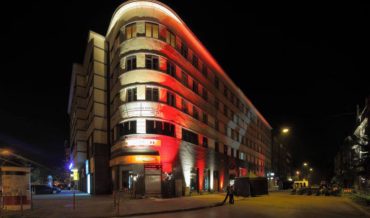Bonarka used to be a small village close to Krakow, mostly famous for the extraordinary clean water. That was the main reason why Jan Boner bought it at the beginning of the XVI century and established there a paper mill. Paper from Bonarka could be recognized by the watermark of French lily, arms of Boner dynasty. The quality of paper was so high that it was used by Polish kings for their documents and survived till now.
The area is also rich in Jurassic limestones, which creates a picturesque landscape full of rocks, caves and ditches. That’s why Bonarka geological reserve was created here in 1961. It is a popular place for walks, jogging, dog walking and picnics.
Another landmark of this area is a monument to the victims of Plaszow camp, place where thousands of Poles, Jews and Soviet prisoners of war were held, forced to work and killed during the II world war. The monument represents five figures with their heads bowed and hearts ripped off. The area of Plaszow camp remains unchanged since the end of the war, however most of the buildings were demolished before the German army left the city. On the territory of the former camp you can find few more memorials at the places of mass executions, there also plenty of banners with the photos of the camp with the information of which part of the camp was there and memories of the survivors. Plaszow camp was portrayed in the famous Stephen Spielberg’s movie “Schindler’s List”.
Another popular place of the area is a big shopping mall Bonarka built in 2009.

